
welcome @on5mm

(portable) operation on 6m, 4m and shortwave bands
For the last few years I have been using a 3 Element SteppIR beam for the upper shortwave bands. It can be tuned stepless from 14 to 30 MHz and changes the length of the three elements by electrical motors. It is connected to the TRX and the computer via a common CAT interface line and tunes to the current transmitting frequency automatically. Via a simple key touch/command the first and third element length can be swapped which means a 180° inversion within only few seconds. The rotor is also connected to the computer via a USB interface; by this the whole rig can be controlled remotely from LAN.
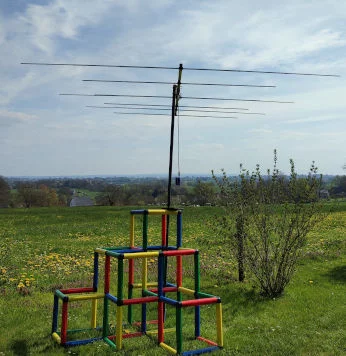
Linking being outdoors and doing some ham radio activity is what I like most. I fancy to take some antenna equipment and hike to a lonely place. During early summer (Es season), my favourite bands are 50 and 70 MHz. I have built a transverter for the latter which works quite well with a homebrew 3 element yagi. After now having moved to a site with excellent HF/VHF conditions, I plan to bring up a 70 MHz beacon/monitor rx. Besides voice operation my favourite modes include all kinds of digital noise like FT8/4/Q65, PSK, WSPR, RTTY, SSTV and sometimes CW.

At the moment, QO-100 satellite equipment is under heavy construction but not yet qrv. While playing around in the shack, I am often listening (and sometimes talking) to DMR BrandMeister. Car is pimped by a Hytera MD655 for DMR and analog voice operation. Various MMDVM-based hardware has been built in the past: Not only a Raspberry Pi based hotspot but also a 70 cm DMR-repeater consisting of a MMDVM/Arduino/Raspberry-combi and two modified Motorola GM radios.
APRS (1200 Bd AFSK and LoRaAPRS)
I am not only interested in digital modes on short- and ultrashortwave bands but also enthusiastic about APRS. That means automatic packet reporting system and includes the transmission of location data, telemetry, weather information and short text messages. It was invented more than 20 years ago by a US ham and spread around the world fast. Ships use it on shortwave frequencies, car or portable use is most commonly in the 2m band. I often have a Kenwood TH-D74 (ON5MM-2) with me; it's a nice all-in-one-rig, GPS RX and TNC is included and automatic beacon transmitting works fairly well.
Another playground is LoRaAPRS, which has become increasingly popular within the last three years. It uses a chirp-spectrum-modulation in the 70 cm-band and covers surprisingly high distances with only little power. There are several well documented projects out there building simple tracker boards, iGates or add-on shields for e.g. Raspberry Pi to bring up a digi. The picture on the shows my homebrew LoRaAPRS-Tracker, consisting of a ESP32 board (containing LoRaAPRS-Module, GPS RX, Bluetooth- and WirelessLAN-connectivity) and a UHF power amplifier. I have added a fused power supply system, a lowpass filter and enabled smart beaconing with the callsign ON5MM-7.
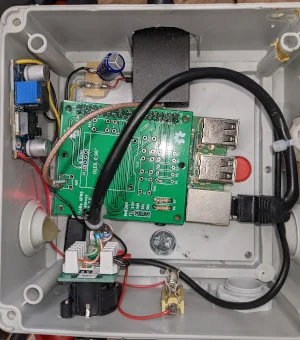
We have also added an iGate at DB0SDA at RWTH Aachen university (see picture left). It is driven by a RA02-chip connected to a Raspberry Pi via an addon-board and runs with the awesome dxlAPRS-toolchain. The power supply is via passive power over ethernet and the antenna is mounted at the roof of the IHF building covering the city of Aachen and the area east of the town with the three highways A4, A44 and A544. The western area is shielded by the Aachen forest and the mountain range at the border to Belgium and the Netherlands.
I also run a APRS-RX-iGate at my QTH in Lontzen to improve the coverage in southwest direction. It is driven by three RTL-SDR USB-Sticks and is decoding 2 m APRS, i.e. AFSK 1200 at 144.8 MHz and 145.825 MHz (ISS-QRG) as well as 70 cm AFSK-1200 (432.500 MHz) and LoRaAPRS (433.775 MHz). It runs the latest version of dxlAPRS, the WebInterface can be found at https://igate.on5mm.be. Since playing a lot with different APRS things, I decided to bring up my own aprsc-server within the APRS-IS-network. Feel free to connect to aprs.on5mm.be (IPv6 only) or dx.on5mm.be (IPv6 or IPv4). The Webinterface is listening to port 14501 as usual.
Decentralized Amateur Paging Network (DAPNET)
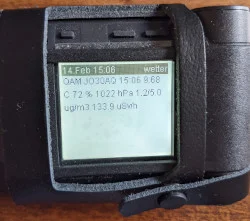
Portable text pagers were very famous among young people when I was at school. Only few years later, hardly anybody ever know them because messenger apps are qrv everywhere anytime. Enthusiats have rescued the old transmitters and pager and modified for ham radio use. I really like the idea of simple one way text communication, condensed information without any useless waste. Nowadays an old skyper from 1990s is receiving ham radio related info and personal messages via DAPNET; I also use a state-of-the-art paging receiver (Swissphone s.quad x35, see right).
It has no nostalgical touch but is a nice link between old technology and modern electronic concepts. The current paging network was developed by members of the ham radio group at RWTH Aachen University. I have contributed a DXCluster plugin, which transfers spots from the international DX network onto the pager display.
 The source is shared on GitHub, the script and server itself run at dx.on5mm.be and can of course also be used like a usual DXCluster node (Telnet Port 7300/tcp).
The source is shared on GitHub, the script and server itself run at dx.on5mm.be and can of course also be used like a usual DXCluster node (Telnet Port 7300/tcp).
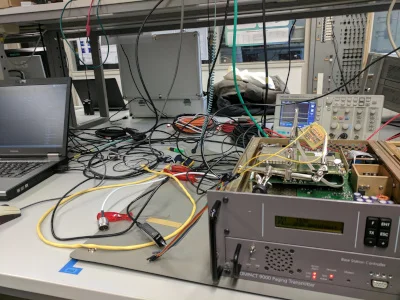
We have also done a lot of hardware development and modification at the RWTH ham radio group. Just like in the former FunkrufMaster Network, old (and of course modified) commercial C9000 Transmitters are used. We have reverse engineered the I²C communication between the main system and its power amplifier to develop a ATMEL-based PA dummy. There has been a closed source solution before based on PIC. Now our approach is also freely available from GitHub. The picture on the left shows the experimental setup with a simple and cheap I²C analyzer (bought for just a few bucks in East Asia) listening to the bus when using the original amplifier. We have also modified one Ericsson amplifier for ham radio use and passed it to friends in Switzerland, who are able and allowed to run 200 watts out on their DAPNET transmitter, something we can only long for in DL and ON.
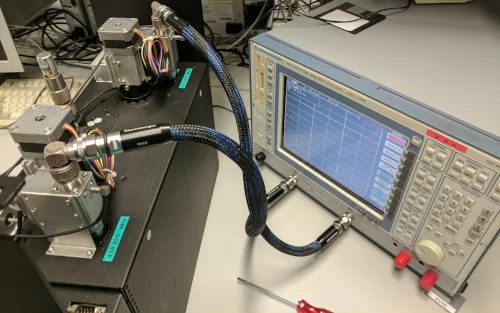
I was able to purchase some power combiners from a former trunk radio network in Germany some time ago. They were tuned to frequencies around 350 MHz; after modifying the tubes (shortening a bit), readjusting to 438/439 MHz-use was possible using the outstanding HF equipment at RWTH Labs. The one on the right is now used at DB0KX and combines the output of a Motorola GM1200 (used for DAPNET TX @ 439.9875 MHz) and the 70 cm analog voice repeater (438.925 MHz).
weather observation
Some homebrew equipment is running in the backyard and recording weather conditions. I will add some details later on. For now you can enjoy values at wetter.familie-matthes.de or via APRS ON5MM-5.
get in touch
There are several ways to contact me:
- ...via ham radio mailbox: on5mm@on0ar.#an.bel.eu
- ...via dapnet: simply page on5mm
- ...via DMR (BrandMeister network) short message or personal call: 2060254
- ...via this new hot shit called email: on5mm@on5mm.be
- ...via email when there's no internet: on5mm@winlink.org
- ...face2face, catch me at ON5MM-1 (position via Brandmeister DMR), ON5MM-2 (position via APRS 2m), ON5MM-3 (position via APRSdroid), ON5MM-4 (position via LoRaAPRS-Tracker), ON5MM-7 (car position via LoRaAPRS)
I really enjoy receiving old fashioned paper qsl cards (and my kids do either). You can send them via 'the bureau' (Royal Belgian Amateur Radio Union UBA, section LGE) or directly to my postal address.
header: lighted buildings photo/Unsplash · background: black and white computer keyboard photo/Unsplash · satellite dish/header: public domain
This site does not use any cookie, affiliate link or tracking system. Logfiles have been disabled and there is no significant visitor's data stored or processed. Therefore neither an impress nor a data agreement is needed according to current law. Subproject dx.on5mm.be uses technical cookies, cf. separate cookie disclaimer.